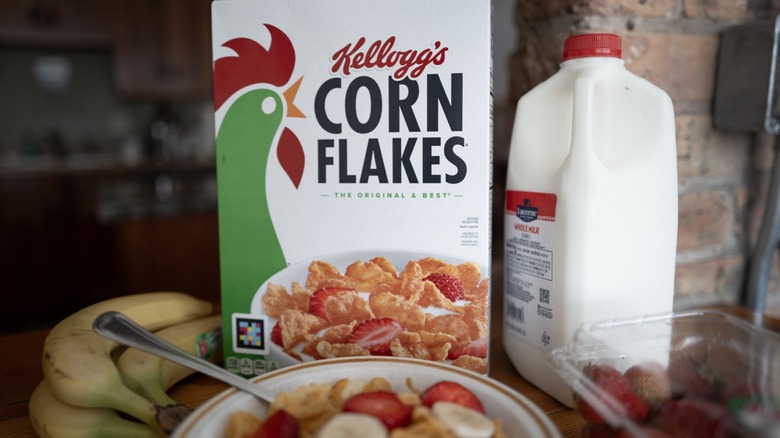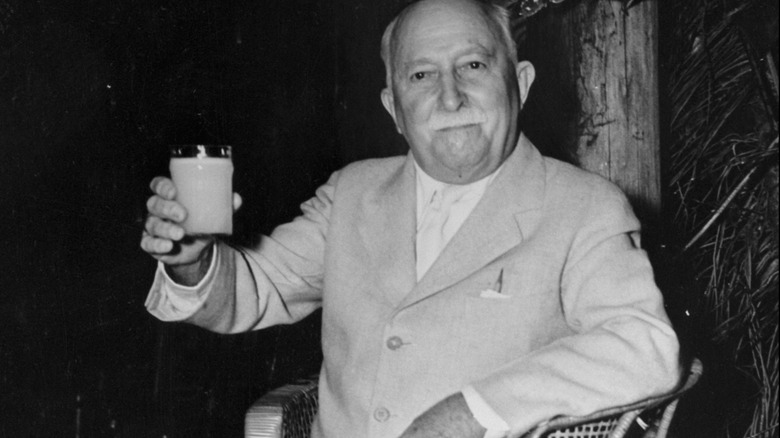The Strange Origins Of Corn Flakes Cereal
In the 19th century, your average middle- to upper-class American citizen was eating a hearty breakfast loaded with meat, carbs, and sugar. Beef steak, cake, flapjacks, and cold cuts were all on the menu, which is perhaps why it's not surprising that meatloaf had its origin as a breakfast food. By the middle half of the 1800s, however, a new breakfast product was taking the world by storm: cold cereal. It was one of many convenience foods born from the Industrial Revolution, and it lessened time spent in the kitchen by busy homemakers.
Enter Dr. John Harvey Kellogg, a member of the Seventh-Day Adventist Church who might well have been America's first faddish health influencer. Kellogg had some extremely peculiar beliefs about human health when he opened the Battle Creek Sanitarium in Michigan, a sort of religious med-spa by way of the 1870s. There, Kellogg espoused his views that healthy people needed to empty their bowels more frequently — a belief that he based on the presumed habits of gorillas. He also argued that people should eat fewer fatty, sugary foods and avoid the "sin" of self-pollution, all in the interest of a healthier digestive system, an emphasis on celibacy, and overall purer living.
After some experimenting with the recipe in the kitchen of his sanitarium, Kellogg invented a flaky corn-based cereal that he determined to be wholesome enough to serve patients. Over time, that cereal became the Corn Flakes that we enjoy today, albeit with much less wacky mashing-up of spirituality, shame, and invalid health claims.
How have Corn Flakes changed today?
Dr. John Harvey Kellogg was at odds with his brother, Will Kellogg, who took the idea of Corn Flakes and ran with it. Will Kellogg was responsible for the successful marketing of Corn Flakes to the masses, as well as adding malt and sugar to the dough, which made the flakes taste better — a step that made John Harvey irate. (We bet that Dr. Kellogg would not be a fan of the unhealthiest breakfast cereals at the grocery store today!) Although John Harvey Kellogg came up with the basic idea, it was Will Kellogg who made Corn Flakes delicious and ensured that they reached the homes of the public.
Today, Corn Flakes are made in factories out of grain corn, which is cleaned to remove debris and hulled by machine. The remaining corn grits are mixed first with water and then with a flavor solution (still containing malt and sugar, among other ingredients), baked, cooled, delumped, broken up, and toasted. People eat Corn Flakes with milk, the same way they did in the 19th century, but they also use the cereal to bread oven-fried chicken, as a binder for meatballs, to top casseroles, or as the basis of no-bake marshmallow squares as an alternative to Rice Krispies treats. Most grocery chains that offer generic private-label brands have their own version of now-ubiquitous Corn Flakes. Next time you crunch into Corn Flakes, perhaps you'll be grateful that Dr. Kellogg's Puritan ideas stayed in the past!

